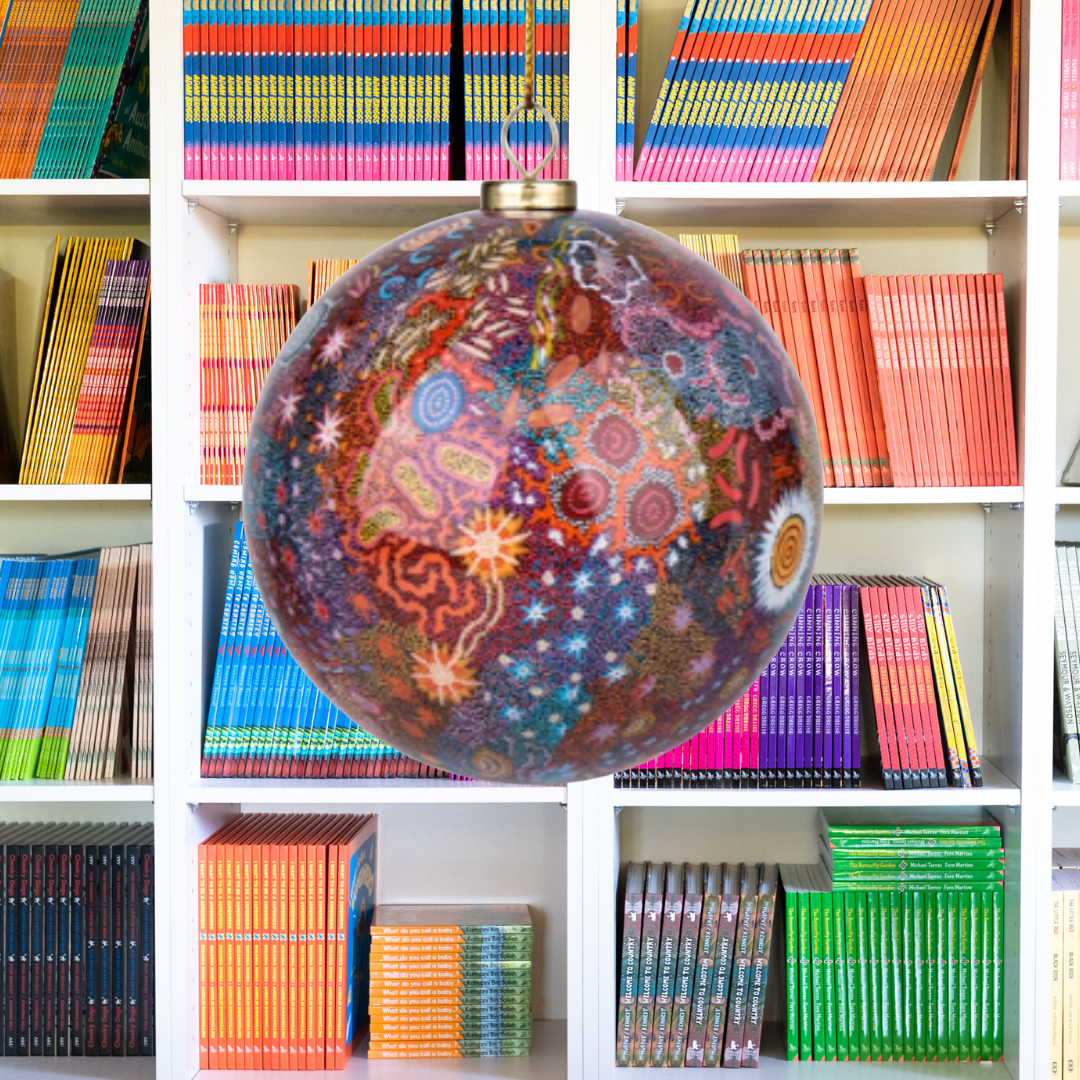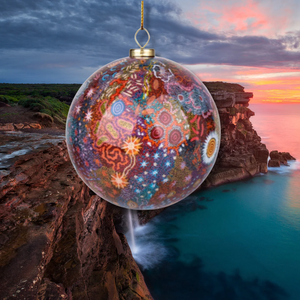Aboriginal Christmas Bauble - Women's Ceremony
Experience the enchantment of the holiday season with exquisite Women's Ceremony Christmas baubles adorned with breath-taking artwork by renowned Aboriginal artist, Michelle Possum. Each bauble captures the essence of Indigenous culture, weaving together vibrant colours and ancient symbols to create a truly mesmerizing and meaningful addition to your festive décor.
- Size: 8cm
- Material: Foam, paper and epoxy resin
- Gold string
- A portion of each sale goes to the artist
- Designed in Australia
- Australian owned and operated
Design Story: The Dreamings that Michelle Possum paints come from Yuelamu on her home country at Mt Allan. These include the stories of Seven Sisters Dreaming, Bush Tucker stories including Seed Dreaming, Bush Coconut, Fire Dreaming, Goanna Dreaming, and Grandmother’s Country, many of which she combines together in complex interwoven designs.
Mainly depicting the overview of maps of traditional Country from her family lands, Michelle describes the many important cultural sites she knows well. Her paintings have gained wide popularity partly due to the fact that as we come to understand the iconography, the paintings make fascinating narratives for a western audience. They are populated not only with plants and food resources and waterholes, but also with people sitting in the landscape – men with hunting implements and women with digging sticks and coolamons.
More About The Artist
More About The Artist


About Michelle Possum
About Michelle Possum
Michelle was born at Napperby Station, Northwest of Alice Springs in the Northern Territory. She was taught to paint by her father Clifford Possum Tjapaltjarri. Clifford is the most renowned painter of the founding group of Papunya artists.
Michelle’s work has a strong connection to her father, family and land. Her paintings can incorporate strong figurative elements as well as important topography relating to her family's country, such as the abundance of food and water. In addition to sacred landmarks and iconography, Michelle's artwork includes important bush tucker and waterholes, making a meaningful connection to modern kitchens, the source of such provisions.
Michelle was born at Napperby Station, Northwest of Alice Springs in the Northern Territory. She was taught to paint by her father Clifford Possum Tjapaltjarri. Clifford is the most renowned painter of the founding group of Papunya artists.
Michelle’s work has a strong connection to her father, family and land. Her paintings can incorporate strong figurative elements as well as important topography relating to her family's country, such as the abundance of food and water. In addition to sacred landmarks and iconography, Michelle's artwork includes important bush tucker and waterholes, making a meaningful connection to modern kitchens, the source of such provisions.






